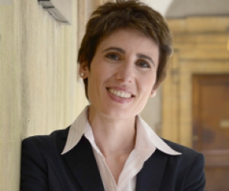Anna Marmodoro

dates de séjour
discipline
Fonction d’origine
Institution d’origine
pays d'origine
projet de recherche
Divide and Empower. The Metaphysics of Stoic Blends
That material bodies can be coextensive in space is a view that has enjoyed no favor in the history of philosophy. Yet, the Stoics held it. My project aims at investigating why they took this view, and what metaphysics they developed for it. My current hypothesis is that: the Stoics posited unlimited division of matter in order to account for how coextension of material bodies is possible. They posited coextension in order to adapt the account of causation they inherited from Aristotle to their physicalist premises. So they developed what I call Empowerment Model of causation: the causal agents ‘interlock’, enabling each other to use each other’s causal powers to do things they couldn’t on their own, without compromising each other’s natures. The Stoic model is an innovative and distinctive metaphysical account in the history of philosophy, different from Aristotle’s causal model; from Plato’s plural subjects model; and from the contemporary extended subjects model. I need to develop and test my hypothesis with the aid of expert feedback, of which there is great concentration in Paris. The research outcomes will include: i) a new interpretation of a key aspect of Stoic philosophy; ii) a better understanding of the role of colocation in ancient thought, by way of comparison/contrast of the Stoics with the Presocratic Anaxagoras; iii) a contribution to mereology on infinitesimal parthood relations.
biographie
Anna Marmodoro is currently an Official Fellow in Philosophy (2011-); she was previously a Junior Research Fellow in College and contemporaneously held a British Academy Post-Doctoral Fellowship in the Faculty of Philosophy (2008-11). Before then she was a Departmental Lecturer in Philosophy in the Faculty and in College (2007-08). Before coming to Oxford, Anna earned her Ph.D. in Philosophy from the University of Edinburgh and a Laurea in Philosophy from the University of Pisa, Italy. She specializes in two research areas: contemporary metaphysics on the one hand, and ancient, medieval and late antiquity philosophy on the other. She has also strong research interest in the philosophy of mind and the philosophy of perception. She investigates issues concerning the nature of properties, dispositions, relations; composition and structure; fundamentality; the metaphysics of substance; and causation.










